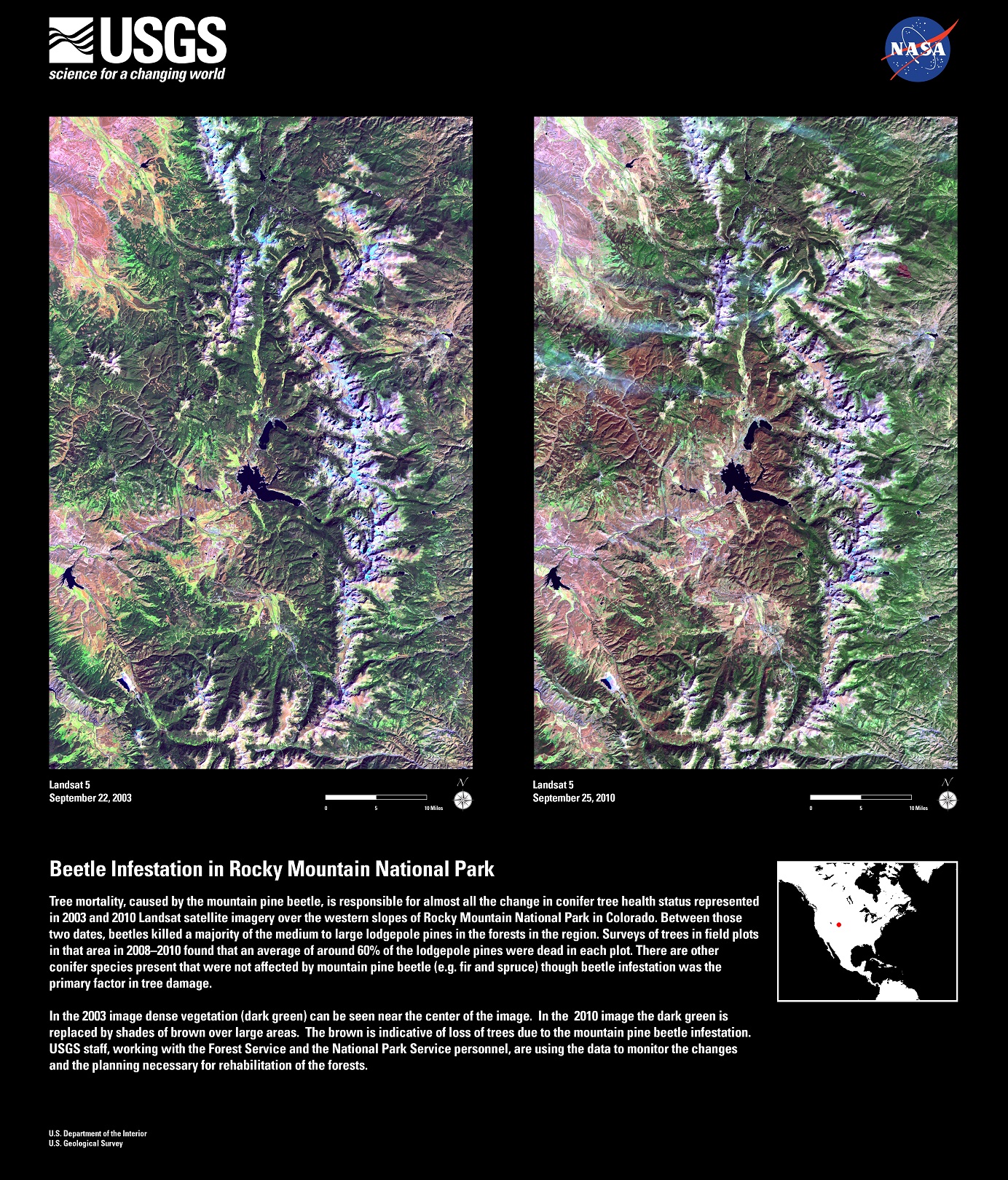Water for the trees
Saving forests from drought as the climate warms
By Liza Lester, ESA communications officer
Drought complicates the big problems afflicting modern forests. Thirsty trees succumb to insects, disease and fire. Water management on forested lands is designed for downstream needs, even when the contributions of forests to clean water and flood control are recognized. Gordon Grant, Christina Tague, and Craig Allen think that mitigating drought stress should be an active priority for management of US public forests – in keeping with the US Forest Service mission to “improve and protect the forest” and “secure favorable conditions of water flows”. In a commentary for Frontiers in Ecology and the Environment, published online ahead of print on May 30th, they outline the scope of the problem and possible management solutions.
Drought has always shaped forests, the authors say. Doing nothing is a plausible response. But when water resources within forests are closely managed for municipal, industrial, and agricultural use, recreation, and commercial fishing, managers must consider what costs the death and decline of trees will exact on these favored ecosystem services. The capacity of forests to control flooding and erosion and absorb contaminants cannot be divorced from the health of the trees.
Thinning and controlled burns have in some cases relieved drought stress, as well as the risk of severe fires, in Norwegian spruce forests and North American ponderosa pine. Grant et al suggest refining this strategy through modeling, with drought relief in mind. Manipulating the density, size and shape of forest glades is a means of controlling snow accumulation, and the rate of snow melt in spring, which is an increasing concern in the West, where snowmelt is a primary source of water through the summer. Manipulating the composition of forest species to control water consumption is a more hypothetical intervention.

The 2001-2002 drought in the Southern Rocky Mountains turned a bark beetle outbreak into an epidemic, withering the lodgepole pines, according to a University of Colorado study published in the October 2012 issue of Ecology. Credit: Michael Wente, University of Colorado Boulder.
Mulching exposed soil after burns and die-backs can keep moisture in the soil, and the soil in place – it’s obviously too much work to mulch all the forests of the west, but for specific, highly valued stands, the benefits might be worth the investment. In some future situtations, we may even consider irrigation – but, Grant et al, argue, there are many conflict-free possibilities to try before entering into the arena of water politics.
Read more about “Watering the forest for the trees” at the US Forest Service Pacific Northwest Research Station.
![]() Grant, G., Tague, C., & Allen, C. (2013). Watering the forest for the trees: an emerging priority for managing water in forest landscapes Frontiers in Ecology and the Environment (online ahead of print; 30 May) DOI: 10.1890/120209
Grant, G., Tague, C., & Allen, C. (2013). Watering the forest for the trees: an emerging priority for managing water in forest landscapes Frontiers in Ecology and the Environment (online ahead of print; 30 May) DOI: 10.1890/120209
A Synthesis of the Science on Forests and Carbon for U.S. Forests. Michael G. Ryan, Mark E. Harmon, Richard A. Birdsey, Christian P. Giardina, Linda S. Heath, Richard A. Houghton, Robert B. Jackson, Duncan C. McKinley, James F. Morrison, Brian C. Murray, Diane E. Pataki, and Kenneth E. Skog. Issues in Ecology #13, Winter 2010.
